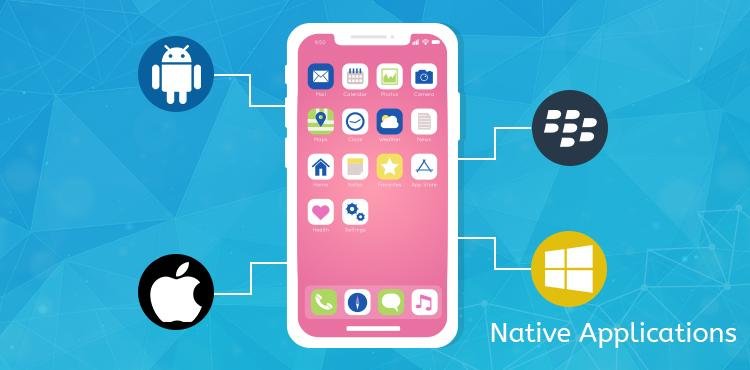What is a Native App and The Benefits they bring to mobile development? With the advent of smart phones, tablets, and other portable devices, more people are realizing the importance of native applications. In an effort to remain competitive and to utilize their technology, developers are looking to native applications to run on these devices, especially Android. There are a number of benefits that a company can enjoy by implementing a native app strategy for their business.
Native App :
For instance, what is a native app, really? It is an application that runs directly on the operating system of the mobile device and is not dependent on the web programming languages used for creating a web-based app. As such, it can run in the background as a supplementary screen to your user interface or as a widget on the home screen. For any given purpose, a native app will give you the same user experience as a web-based app without the need for compatibility hacks or unnecessary code modifications. For a business, a native app is a great way to leverage your Android platform to run additional business-related applications.
Since apps that run natively on a mobile device are optimized to use the device’s own resources and deliver an optimal user experience, companies that have an app in mind should consider using a Native Developer. Native apps provide several distinct advantages to a company. They ensure the company’s brand integrity and deliver a unique touch point with a brand logo, colors, text, and other visual components. Native apps can also take full advantage of the multitasking capabilities of Android, delivering apps that work across multiple platforms. And of course, a company that makes the decision to use a Native application will gain access to a highly functional, secure, and stable platform that will stay current with the changing mobile market and will run seamlessly and reliably.
Types of Native Apps :
There are many types of native applications, but two of the most common include: hybrid apps and client-side scripts.
Hybrid apps :
Hybrid apps are created by combining a number of different technologies, such as Java, JavaScript, and Native JavaScript, into one program. Examples include games, media player apps, and more. However, the key to creating a successful hybrid app lies in the idea that the program is “native” in nature. This means that it’s been designed to function the same way on each platform, and that the programming and implementation have been identical between both platforms.
Client-side scripts :
Client-side scripts are another type of native app, which works in conjunction with native code. A native app developer would create a script-based application and then use that same script as the basis for the functionality of the application. Some examples of client-side scripts include web views, shopping carts, interfaces, and forms. However, the key to developing a successful client-side script application lies in the idea that the program is “clones” of the original application.
Considerations they should take into account while developing a new Native App:
When a company is ready to begin development on a new native app, there are a number of considerations they should take into account.
- First, a company needs to determine if it will be a wise investment to develop a new app that will only run on iOS or Android, as these are the two most widely used mobile operating systems today.
- In addition, a company needs to determine the likely revenue and audience for the app and whether it makes sense to develop a native app that is exclusive to their platform or if it makes more sense to submit the app to a number of different app stores.
- Finally, a company needs to take into consideration any other restrictions or licensing restrictions that may apply to using the new app.
Challenges involved in developing a Native App :
There are many challenges involved in developing a native app for mobile devices. Because the app is designed to work only with a particular device or browser,
- A company must ensure that the app works on the device where it will released on.
- Additionally, a company has to ensure that it is compatible with the device . And users can access with ease.
- The code should be written as easily as possible for optimal readability on both iOS and Android devices. They should be approved by the developer before the application is submitted to the store.
Once a company develops a native app for iOS or Android, they then enter into a submission process with the Apple App Store or Google Play. If the company has developed an impressive and engaging app, they have a good chance of being accepted into the app store. However, even if the app is accepted into the app store, it does not mean the end of the process. A company still has to promote its app in order to increase its exposure and create a significant amount of downloads from users. While a company can choose to market the app itself or hire an agency to do so, both methods are completely viable options and should be considered prior to developing an app for mobile use.

